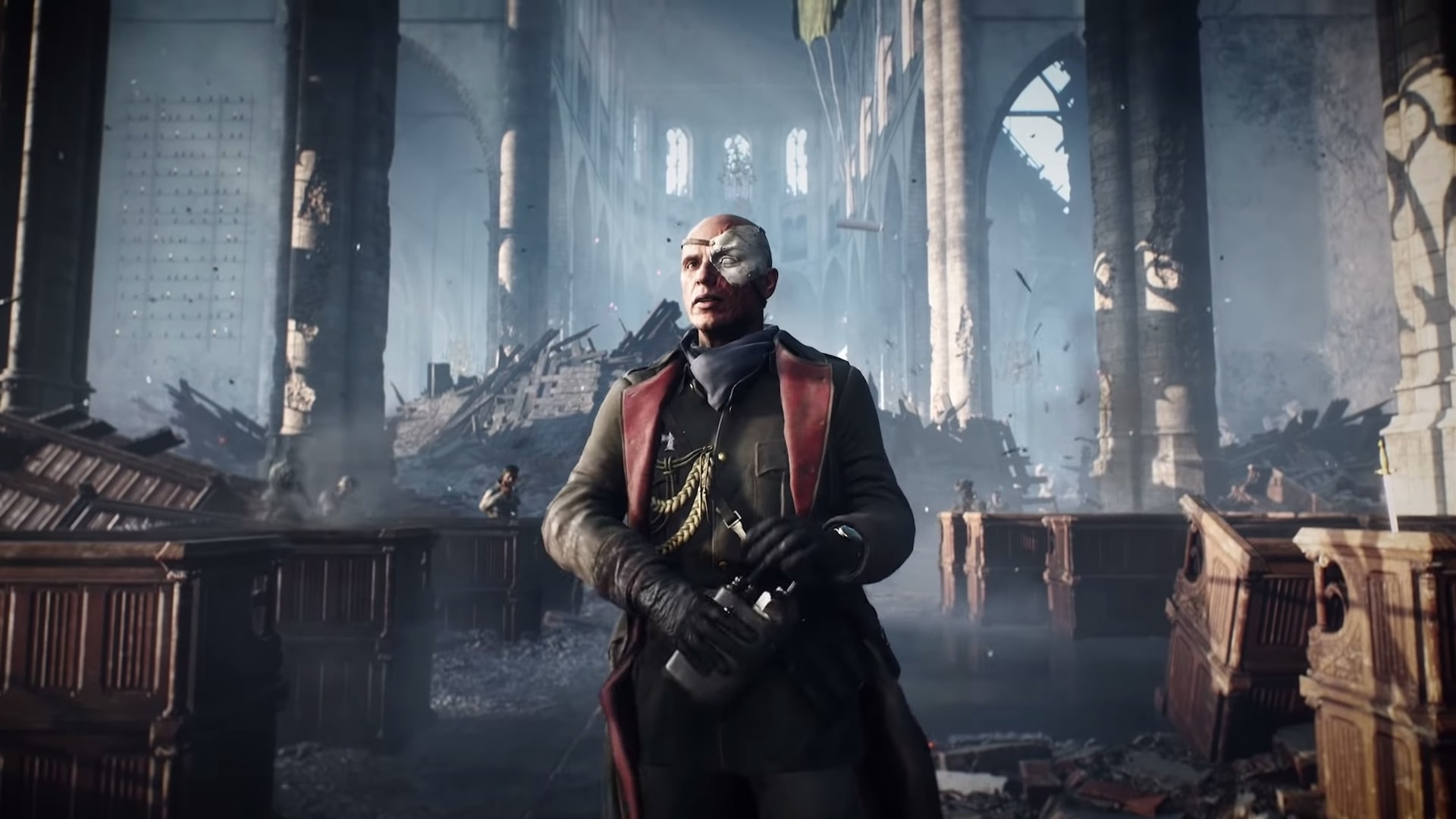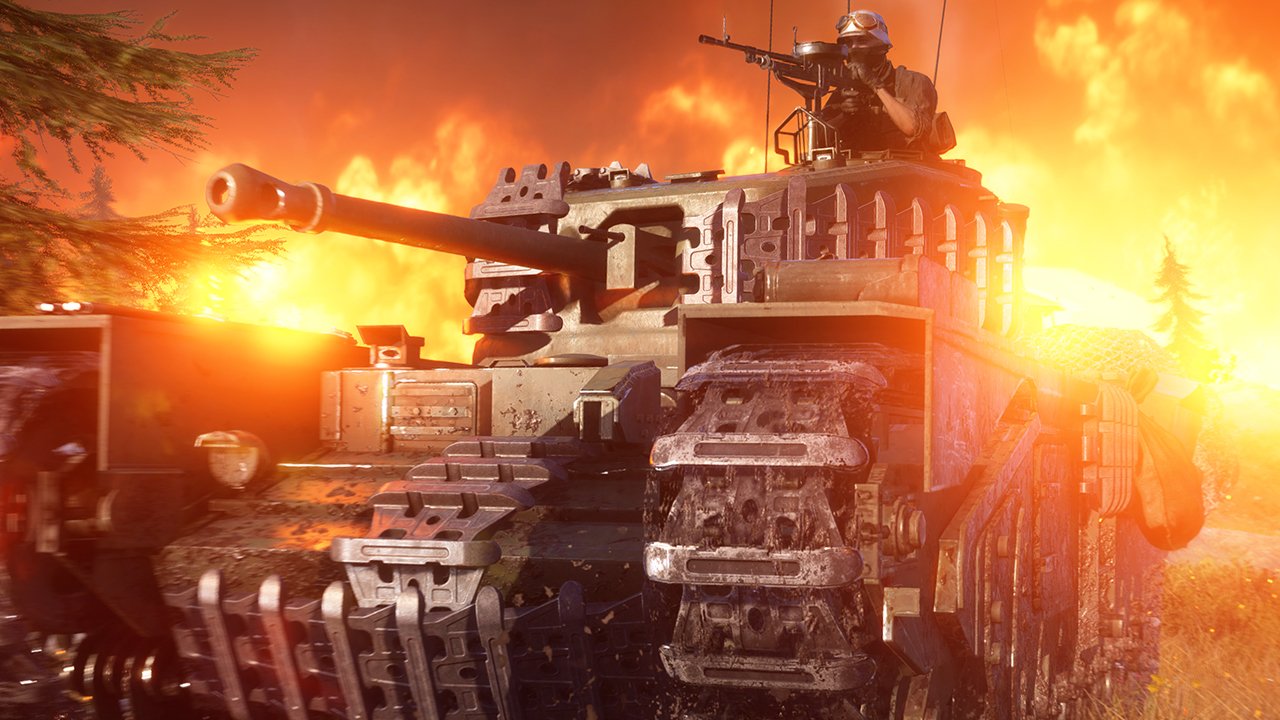Battlefield 5 has had a rough first year, but it's closing out 2019 on a high
From Firestorm outages to poor sales numbers, Battlefield 5's first year hasn't been smooth for DICE or its fans

When Battlefield 5 released in November last year, my review called DICE's WW2 sequel "a robust, visually stunning, and perfectly enjoyable shooter", albeit one that "fails to raise the admittedly high bar set by its predecessors." Even back then, the game had already ran into much controversy and confusion, with a clamorous reveal trailer that left fans more concerned than delighted, a battle royale announcement that screamed of last minute bandwagoning, and a staggered launch that turned a release date into a needlessly complicated release week, all tied around the much maligned EA Origin platform.
In the lead up to launch, DICE also heavily promoted Battlefield 5 as a live service game with an ambitious post-release roadmap called Tides of War, leading many to believe that the game would at least expand and improve dramatically over time – that the buggy, imbalanced experience found on day one would not be representative of the experience that players would find should they boot up the game in the weeks and months to come.
Unfortunately, Tides of War has neither been Battlefield 5's ace in the hole nor its saving grace, as the game's first year has been engulfed by a number of unexpected fires that DICE has had to haphazardly divert resources towards putting out. The resulting impact is a core player base that feels let down by one of its favourite developers, even while many admit to still enjoying the crux of the content that makes up Battlefield 5's multiplayer firefights.
The fog of war


The best Battlefield games, ranked
Right from the outset, Battlefield 5 ran into trouble during its first month of release, in which DICE repeatedly missed the mark on nailing the game's Time to Kill ratio (TTK) in multiplayer, both raising it and then walking back on that change within the same week. The developer eventually posted a statement on Reddit explaining the u-turn, admitting that it "didn’t get it right" the first time, and would be looking more closely at Battlefield's meta-data to exact changes that were more attuned to community feedback.
DICE is still tinkering with the game's TTK to this day, but that early mishap was the first of many lessons that the studio would learn the hard way over the course of the next year. It is, of course, no secret that Battlefield games are often riddled with bugs at launch, but ironing out Battlefield 5's kinks continues to be an especially challenging endeavour for DICE, which – for whatever reason – has struggled to prevent the game's underlying quality-of-life issues from muddying the waters of their original roadmap.
Most patches and content updates have introduced as many problems as those that they've quashed, while several promised features, modes, and maps have been delayed or outright cancelled as DICE continues to optimise the game's architecture. From very early on, for example, hacking became a notable issue across both PC and console, and while DICE has now developed a clearly communicated policy and approach to cracking down on cheaters, its delayed response to the problem represented a case of too little, too late, alienating a sizeable number of law-abiding players in the process.

Technical complications aren't the only area where Battlefield 5 has taken its eye off the ball, either. In June, a trailer debuted a new Elite character for the game called Wilhelm Franke, presented as a cold-blooded Nazi officer of theatrical villainy. Unfortunately, it soon transpired that Wilhelm Franke was the name of a real resistance fighter from World War 2, who used his Dresden cigar store as a hideout for secret anti-fascist meetings in Germany before being arrested by the Gestapo in 1944.
Weekly digests, tales from the communities you love, and more
Either DICE knew this, and was intentionally warping the legacy of Franke's reputation (the city of Dresden still honors him to this day), or the studio hadn't done its research. DICE quickly announced that it would be changing the character's name to avoid ill-suited associations with the real life war hero, but the damage had already been done. In other games, this might have been written off as an awkward but forgivable faux pas. Compounded upon everything else that Battlefield 5 had slipped up on so far, however, it only reinforced the perception of a game marked by incompetence.
A perfect storm
All of which brings us to Firestorm. The battle royale mode, promised by senior producer Lars Gustavsson during EA's E3 2018 press conference, eventually hit Battlefield 5 as a free update in March the following year, and though early reactions were positive, Firestorm has not seen a level of popularity that the core fanbase, DICE, and the mode's partner developer Criterion had expected or anticipated.

"DICE is still tinkering with Battlefield 5's TTK to this day..."
Like that of the main multiplayer component, Firestorm launched in a far from perfect state, and hasn't improved enough to retain a sustainable playerbase since. In May, reports from players in Australia and New Zealand suggested that the Oceanic servers were next to unplayable, and the lack of communication from anyone on the inside suggested that nothing was being done to fix it. Even now, the wait times for Firestorm are inconsistent to say the least, and Oceanic players are having to organise their own meet-ups simply to get enough people in the same match.
DICE had also promised that Firestorm's shonky loot system was being overhauled but, like many other aspects of the game, that has now been put on hold indefinitely while the studio works on "restoring quality to the core of the Battlefield experience." Many players have taken this as an indication that the team has cut its losses and given up on supporting the mode altogether. The fact that prediction sounds completely plausible, despite any official evidence, only goes to show how much trust in DICE has slipped over the last 12 months.
All that being said, there's still reason to put your trust in DICE and the ongoing evolution of Battlefield 5. The content that has been released over the last year, from fan favourite maps to the return of Rush mode, has been some of the best that Battlefield 5 has to offer; comprehensive, enjoyable and – for the most part – completely free.

Just recently, DICE began rolling out Tides of War's fifth chapter, War in the Pacific, featuring several remixed versions of fan-favourite maps (including the much beloved Wake Island) and a number of new weapons, vehicles, playable factions, and more, all completely free of charge. Better yet, features like private servers are still to come, too, even with the caveat that any or all of it could be cancelled/delayed further while DICE continues to work behind the scenes to keep the game running smoothly.
As Year One of Battlefield 5 comes to an end, so too does the full rotation of its Tides of War campaign. DICE is already kicking off Year Two of the multiplayer shooter with its War in the Pacific expansion, but has stopped short of revealing any detailed plans for the game beyond 2019 (though EA has confirmed a new Battlefield game will be hitting PS5 and Xbox Project Scarlett by 2022).
In any case, it's safe to say that more needs to be done if Battlefield 5 intends to restore the goodwill amongst its embittered, but still active player-base. If you take a look at the kind of miraculous turnaround that DICE has achieved with Star Wars Battlefront 2 over the last two years, I'd say the studio is more than capable of pulling off another amazing comeback.
Discover more of the best FPS games that you can play right now, or watch our full review of Battlefield 5 in the video below.
I'm GamesRadar's Features Writer, which makes me responsible for gracing the internet with as many of my words as possible, including reviews, previews, interviews, and more. Lucky internet!



